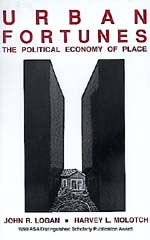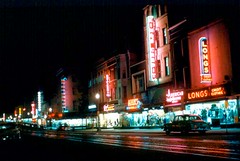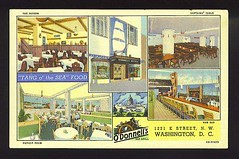What can Austin do to save 'iconic' businesses?
 Rebecca McEntee, AMERICAN-STATESMAN. One of the many signings on the side of the Liberty Lunch building in Austin. Signees wrote on the bull's eye painted on it foreshadowing the destruction of the building to come.
Rebecca McEntee, AMERICAN-STATESMAN. One of the many signings on the side of the Liberty Lunch building in Austin. Signees wrote on the bull's eye painted on it foreshadowing the destruction of the building to come.Is a story in today's Austin American-Statesman (registration required) about the decline of locally owned businesses, institutions so to speak, in the face of intensification of land use in the center city.
This happened in DC in the 1980s. It's amazing to look at old images of downtown--photos and postcards-and see the variety of storefronts, the range of the types of businesses (can you really imagine downtown diners, sure Waffle Shop hung on for awhile, and Whitlow's closed in the late 1980s--for a project that took many years to come to fruition).
Now for the most part, Downtown DC is an upscale office ghetto. Not very interesting or diverse at all.

And merely one more example about Molotch's point about the growth machine (see in City as a Growth Machine: Toward a Political Economy of Place) and the focus on intensification of land use and increase in the rate of return (increase in rents) from the land.
 F Street in the 1950s, Downtown Washington, DC. Photo from Reston Paths. (Jerry McCoy who works for DC Library and is the president of the Silver Spring Historical Society, used to run around and take photos of downtown buildings before they came down. Alas, he got burned out and stopped, but I've seen some of the photos at a presentation he did many years ago... )
F Street in the 1950s, Downtown Washington, DC. Photo from Reston Paths. (Jerry McCoy who works for DC Library and is the president of the Silver Spring Historical Society, used to run around and take photos of downtown buildings before they came down. Alas, he got burned out and stopped, but I've seen some of the photos at a presentation he did many years ago... )In regions of high demand, neighborhood commercial districts have the opportunity to remain more "quaint" but you need able leaders who understand the value of authenticity, especially in a world of the chain, and a 400% increase in the amount of retail space since 1960, which has put traditional commercial districts at a disadvantage. Only by strengthening their advantages can they compete in an increasingly chained environment.
Speaking of which, did you see this article in today's NYT, "A New Star in the Columbus Circle Orbit." From the article:
The remaining space at 15 Central Park West has 170 feet of Broadway frontage. There is also a 25,000-square-foot second-floor space. The asking rate for the prime ground-floor space is more than $300 a square foot annually, while the average asking rate on the four retail levels is in excess of $100 a foot, Mr. Spiegelman said.
Those rates are high, but prices in Columbus Circle continue to be dwarfed by those at the southeastern corner of Central Park — 59th Street and Fifth Avenue — home of the Plaza Hotel, the distinctive new Apple Computer store and numerous high-end retailers.
“At about $1,350 a foot, Fifth Avenue has the highest retail rents in the world, and retailers and nonretailers feel it’s the best place to expose their brand,” Mr. Spiegelman said. “On the West Side, retailers come to do sales. They’re not necessarily here to brand.”
 This DC restaurant eventually moved to Bethesda, and then opened a restaurant in Gaithersburg. The Bethesda restaurant closed in favor of a new taller building. I don't know if it's still open out in upper Montgomery County.
This DC restaurant eventually moved to Bethesda, and then opened a restaurant in Gaithersburg. The Bethesda restaurant closed in favor of a new taller building. I don't know if it's still open out in upper Montgomery County.High-demand commercial real estate markets are increasingly difficult for independents. Typical stores in neighborhood commercial districts might gross $300/s.f. in sales annually...
See:
-- (Why aren't people) Learning from Jane Jacobs
-- Is there a link between historic designation and chaining up of retail in neighborhood commercial districts?
-- Dupont Circle's changing retail environment covered in today's Post
-- Nurturing independent retailiers through creatively reducing capital requirements
Index Keywords: urban-revitalization; Growth-Machine



0 Comments:
Post a Comment
<< Home